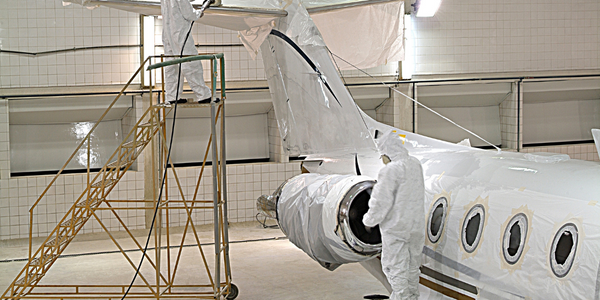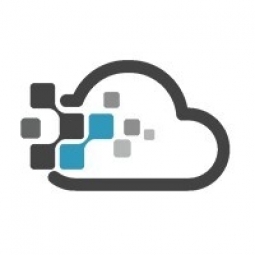Technology Category
- Functional Applications - Product Lifecycle Management Systems (PLM)
- Infrastructure as a Service (IaaS) - Cloud Computing
Applicable Industries
- Aerospace
- Life Sciences
Applicable Functions
- Maintenance
- Product Research & Development
Use Cases
- Manufacturing Process Simulation
- Virtual Reality
Services
- Cloud Planning, Design & Implementation Services
- Hardware Design & Engineering Services
About The Customer
Adaptive Corporation is a leading Digital to Physical Product Lifecycle Company that helps streamline business processes, reduce costs, and improve efficiencies for customers who need to bring new products to market. The company works closely with its 500+ customers, which include leading manufacturers of industrial and consumer products and the suppliers that provide the underlying subsystems. Adaptive Corporation's unique 'Digital to Physical' product portfolio includes CAD/CAM, CAE, PLM, business analytics, metrology, and 3D printing solutions from leading IT providers. The company's mission is to craft tailored solutions that help customers shorten development and production cycles throughout product planning, development, manufacturing, and after-market service processes.
The Challenge
Adaptive Corporation, a leading Digital to Physical Product Lifecycle Company, was facing significant challenges with its High-Performance Computing (HPC) system. The company's workload varied greatly throughout the year, leading to either underutilized computing capacity or insufficient capacity when multiple projects were underway simultaneously. This resulted in bottlenecks when multiple jobs needed to be solved at the same time, causing projects to run over schedule. Additionally, the on-premise hardware was becoming outdated within 2-3 years, necessitating frequent upgrades and a dedicated IT support team to maintain the servers and licenses. These issues were undermining Adaptive Corporation's mission to provide tailored solutions that help customers shorten development and production cycles.
The Solution
To overcome these challenges, Adaptive Corporation turned to the cloud for bursting and chose Rescale due to its competitive pricing and ability to customize solutions. The company transitioned from its existing HPC system to a 'reverse hybrid' cloud computing environment, relying primarily on Rescale's unlimited, on-demand capacity. Since 2014, Adaptive Corporation has been running Abaqus on Rescale and even hosts its license on their server. This setup allows the company to tap into their license server on Rescale when they need to run simulations on desktop computers, eliminating the headache of license management. This cloud-based solution has provided Adaptive Corporation with the flexibility to meet the demands of their simulation engineers and respond to their constantly changing compute needs.
Operational Impact
Quantitative Benefit

Case Study missing?
Start adding your own!
Register with your work email and create a new case study profile for your business.
Related Case Studies.

Case Study
Airbus Soars with Wearable Technology
Building an Airbus aircraft involves complex manufacturing processes consisting of thousands of moving parts. Speed and accuracy are critical to business and competitive advantage. Improvements in both would have high impact on Airbus’ bottom line. Airbus wanted to help operators reduce the complexity of assembling cabin seats and decrease the time required to complete this task.

Case Study
Aircraft Predictive Maintenance and Workflow Optimization
First, aircraft manufacturer have trouble monitoring the health of aircraft systems with health prognostics and deliver predictive maintenance insights. Second, aircraft manufacturer wants a solution that can provide an in-context advisory and align job assignments to match technician experience and expertise.

Case Study
Aerospace & Defense Case Study Airbus
For the development of its new wide-body aircraft, Airbus needed to ensure quality and consistency across all internal and external stakeholders. Airbus had many challenges including a very aggressive development schedule and the need to ramp up production quickly to satisfy their delivery commitments. The lack of communication extended design time and introduced errors that drove up costs.

Case Study
Accelerate Production for Spirit AeroSystems
The manufacture and assembly of massive fuselage assemblies and other large structures generates a river of data. In fact, the bill of materials for a single fuselage alone can be millions of rows of data. In-house production processes and testing, as well as other manufacturers and customers created data flows that overwhelmed previous processes and information systems. Spirit’s customer base had grown substantially since their 2005 divestiture from Boeing, resulting in a $41 billion backlog of orders to fill. To address this backlog, meet increased customer demands and minimize additional capital investment, the company needed a way to improve throughput in the existing operational footprint. Spirit had a requirement from customers to increase fuselage production by 30%. To accomplish this goal, Spirit needed real-time information on its value chain and workflow. However, the two terabytes of data being pulled from their SAP ECC was unmanageable and overloaded their business warehouse. It had become time-consuming and difficult to pull aggregate data, disaggregate it for the needed information and then reassemble to create a report. During the 6-8 hours it took to build a report, another work shift (they run three per day) would have already taken place, thus the report content was out-of-date before it was ever delivered. As a result, supervisors often had to rely on manual efforts to provide charts, reports and analysis.

Case Study
Developing Smart Tools for the Airbus Factory
Manufacturing and assembly of aircraft, which involves tens of thousands of steps that must be followed by the operators, and a single mistake in the process could cost hundreds of thousands of dollars to fix, makes the room for error very small.








